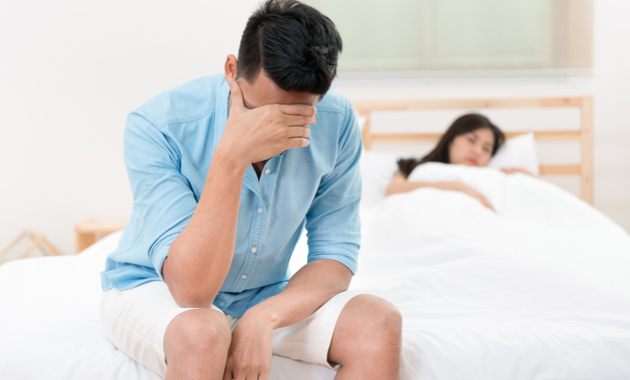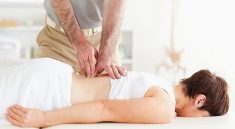While a male’s testicles naturally decrease during the aging process, many other hormones may also play a role in the symptoms of andropause. The steroid hormone DHEA decreases naturally after age 30, and another hormone called sex hormone-binding globulin increases with age. These factors decrease bioavailable testosterone and cause decreased testosterone levels. This causes the loss of testosterone in the blood, which may not supply the cells and tissues of the body.
The decrease in hormone levels causes the menopause symptoms. The drops in estrogen, progesterone, and testosterone may take years before men begin to experience the symptoms of menopause. Although men may not experience symptoms immediately, the drop in hormones may increase the risk of developing heart disease or osteoporosis. While men may experience a variety of symptoms, the good news is that they don’t have to live with these symptoms for years. While men who experience andropause may not exhibit the same dramatic symptoms as women, it is still an important process that affects the quality of life for many men.
Other medical conditions can cause low testosterone levels. Some of these conditions include diabetes, obesity, and certain medications. Combining these conditions can cause testosterone deficiency. A doctor can evaluate low testosterone levels to determine if there is a cause for concern. An evaluation may also involve blood tests to measure levels of testosterone and to assess the health of the prostate. In many cases, a specialist can recommend treatment options that can help manage the symptoms of andropause and improve sexual health.
While the symptoms of andropause are uncomfortable and may even lead to depression, doctors recommend hormone replacement therapy to help men live a more fulfilling life. Some men may also find it helpful to make lifestyle changes such as increased exercise, healthy eating, and stress reduction. Ultimately, however, the doctor will determine if testosterone treatment is right for them. Remember, there are risks associated with testosterone replacement therapy, so if you are unsure whether or not it’s right for you, consult your doctor or men’s wellness clinic called Prestige Men’s Medical Center.
The symptoms of andropause include a decrease in testosterone and dehydroepiandrosterone. Men experiencing andropause may feel low energy, have fatigue, mood swings, and even develop depression or anxiety. Low testosterone may even predispose men to heart disease and osteoporosis. Men can easily diagnose and treat andropause with a simple blood test. When the symptoms become more severe, treatment is often necessary.
The decline in testosterone during andropause is a natural process, but some men experience it more than women. Although this process is not the same for every man, men who experience it generally continue to produce sperm and eggs. While it is rare for a man to experience a drop in testosterone in middle age, men with lower levels of T are also more prone to weight gain and mood swings. A man’s test levels tend to decrease at a rate of 2% per year from age thirty to forty. Physical activity and healthy diet are also helpful in slowing the decline in T.
Andropause is the process of changing men’s hormone levels. It can occur suddenly or slowly. It can start as early as your thirties. A man’s testosterone production decreases between one and two percent per year. An estimated 25 million men in the U.S. experience symptoms of andropause, and that number is expected to rise by 57 million in 20 years. Testosterone replacement therapy (TRT) is a proven way to delay or eliminate the symptoms associated with andropause.
Some symptoms of andropause are decreased libido, reduced self-confidence, increased body fat, and difficulty concentrating. Men suffering from andropause may be at risk of developing mental disorders and losing their sexual drive. A doctor can diagnose and treat andropause by examining their blood testosterone levels and performing specific questionnaires. In rare cases, the condition can lead to erectile dysfunction and other urological disorders.
While the symptoms of andropause vary widely between men, the main factor in both cases is a gradual decline in male hormone levels. Testosterone levels typically decline in men in their fifties, and men may notice a subtle downward trend in their energy levels. They may lose enthusiasm for physical activities and experience fatigue more quickly. If the decline in testosterone in your body is a symptom of andropause, a doctor should be consulted immediately.
While men and women experience different stages of menopause, both women experience the same process. However, while women undergo hormonal changes, men’s hormone levels decline over a longer period of time. Andropause affects the quality of life of both men and women, so treatment must be tailored to each individual. It is important to remember that while men experience lower levels of testosterone, they are still fertile and can produce children. This decline in testosterone is called low-T.
Although men don’t experience the same physical symptoms of andropause as women, there are certain differences between the two. A man’s testosterone level drops by as much as 1% per year after he reaches the age of forty, while women’s do not. Among other things, men can experience increased levels of osteoporosis, a disease of the bones. There are also some medical treatments for andropause, which include medication, natural supplements, and lifestyle changes.
Although most women will experience the symptoms of male menopause, there are also treatments available to minimize or eliminate the effects. Lifestyle changes and antidepressants can help men deal with this condition. If lifestyle changes alone aren’t enough, hormone replacement therapy is another option. However, this treatment has its drawbacks, including the risk of prostate cancer. A qualified physician will evaluate your symptoms and determine the best treatment. This will help you minimize the effects and maintain a healthy quality of life.
The most common treatment for men experiencing andropause is hormone replacement therapy, or HRT. HRT may be given in the form of pills, creams, patches, or suppositories. The technique Dr. Huertas recommends is to place HRT pellets in the vagina. Taking HRT will help reverse the effects of andropause and restore your body’s natural testosterone levels. It is also a popular nonprescription treatment for men experiencing andropause.





